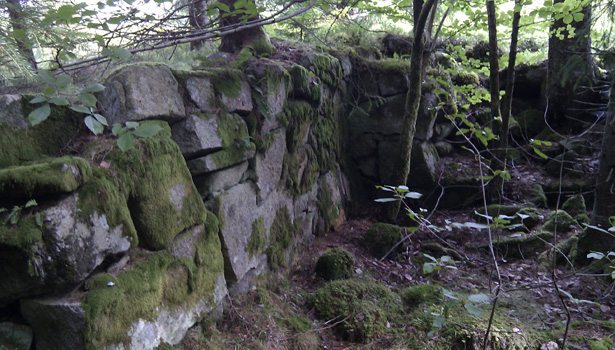Cultural Heritage of Travellers on the map
Get to know the Cultural Heritage of Travellers. For over 500 years, the travellers and their culture of trade and entrepreneurship have been present in Scandinavia and left their mark on the region’s history. The Travellers’ Map highlights this culture and its heritage through stories of a life full of cultural encounters between travellers and the majority population

Photo: Kristina Lindholm, Bohusläns museum.
Travellers’ Map – The cultural heritage of the travelling community
The old travellers’ sites and settlements have left traces on the landscape and in people’s memories. However, they risk fading away both amongst the travelling community and amongst the majority population. The Map allows you to follow in the footsteps of the travellers and visit their sites and share stories in places where the travellers lived and worked.
The Traveller’s Map exists to highlight the travellers’ cultural history and convey the long history of multi-culture and cultural encounters along the Swedish-Norwegian border. By doing so, the history of the travelling community will become part of the recognised cultural heritage and all future efforts on cultural heritage. Wider knowledge will increase our understanding of, and interest in the history and cultural heritage of the travelling community, amongst travellers and the general public alike.
How does the Map work?
The Travellers’ Map is based on a map, and stories about past and present travellers’ sites. It also contains a multitude of information on the wider culture and history of this recognised national minority group. We find out how travellers and local residents have worked together through the centuries.
The documented sites are located along the Swedish-Norwegian border region. These include permanent settlements, temporary sites used for longer or shorter stays on trade journeys, and also special routes used by families when travelling between different trading districts and sites for trading or performing. Travellers’ Map users will also have the opportunity to share their own knowledge on these and other sites that are connected with the travelling community.
The Map emanates from the southern part of the Swedish-Norwegian border region, and will be extended over time to include sites in other parts of Scandinavia.
The webbsite The Travellers’ Map is only in Swedish and Norwegian so far.
A multi-skilled collaboration
The Travellers’ Map has been developed as a joint venture between Bohuslän’s Museum and the Østfold Museum Foundation/Halden Historical Collections, in collaboration with travellers’ advocacy groups Kulturgruppen för resandefolket, Landsorganisasjonen for romanifolket, and Taternes Landsforening, and supported by the Glomdal Museum and the author Bo Hazell. Members of the travelling community have also made individual contributions to the Map, as have representatives of the majority population such as local cultural and history societies. The Map is operated by the Østfold Museum Foundation/Halden Historical Collections in collaboration with Bohuslän’s Museum.
National minority
In Sweden, travellers are part of the Roma national minority and the official terminology is ‘resande’ (traveller) or ‘resande romer’ (travelling Roma). In Norway, travellers are a recognised national minority in their own right and the official terminology is ‘taterne’ (the vagrants), ‘romani’ or ‘de reisende’ (travellers). Either term refers to people from the same community, bound by strong family connections across the national border.
Sponsors
The Travellers’ Map has been developed as part of the Scandinavian Travellers’ Map project with financial support from Interreg Sweden-Norway Borderless Co-operation.
Co-sponsors: Bohuslän’s Museum, Dals-Ed District Council, Norwegian Ministry of Government Administration, Reform and Church Affairs, Gränskommittén, Halden District Council, Romanifolket/ Taternes Kulturfond, Sparebanksstiftelsen DNB Nor, Swedish Arts Council, Västra Götaland Regional Council, and Østfold Museum Foundation.
Activities within the project have received financial support from the Clara Lachmanns foundation for the encouragement of Scandinavian kinship, Letterstedtska Society, Swedish National Heritage Board, Västra Götaland County Council, and Kultur i Väst.
Travellers’ Map contacts:
www.resandekartan.se www.reisendekartet.no info@reisendekartet.no
Bodil Andersson Webbmaster, Østfold Museum Foundation/Halden Historical Collections bodand@ostfoldmuseene.no Telephone 0047 94 78 67 69
Kristina Lindholm, Bohuslän’s Museum kristina.lindholm@bohuslansmuseum.se Telephone 0046 (0)522-65 65 26
Svein Norheim, Østfold Museum Foundation/Halden Historical Collections svenor@ostfoldmuseene.no Telephone 0047 47 81 64 66
The traveller community
Travellers have lived in Sweden for many hundreds of years, travelling from village to village offering their wares and services. In Sweden, modern-day swedish travellers form part of the Roma national minority. Bohusläns Museum has been working together with members of the traveller community since 2004 to raise awareness of the history of the traveller community as a part of our shared heritage.


![brosch_2_kant[2]](http://www.bohuslansmuseum.se/en/wp-content/uploads/sites/2/2015/12/brosch_2_kant2.jpg)